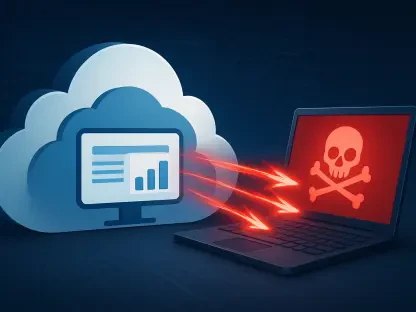In the fast-paced world of cybersecurity, Security Operations Centers (SOCs) are drowning in a deluge of alerts—960 daily for the average organization and over 3,000 for large enterprises, according to the latest SACR AI-SOC Market Landscape Report. Nearly 40% of these alerts slip through the cracks, uninvestigated, leaving critical vulnerabilities exposed. This staggering reality paints a vivid picture of SOCs stretched beyond capacity, battling analyst burnout and missed threats. As cyber adversaries grow more sophisticated, the question looms: can traditional methods keep up, or is a transformative solution urgently needed?
The importance of addressing this crisis cannot be overstated. With 61% of security teams admitting to overlooking critical alerts, the stakes are higher than ever. Businesses face not only the risk of devastating breaches but also escalating costs and eroded trust. Enter AI-driven SOC platforms—a game-changer that promises to scale operations, reduce noise, and empower analysts. This feature dives deep into the evolving landscape of AI-SOC solutions, exploring architectures, risks, and practical steps to select the right platform, ensuring security teams stay ahead of threats in an increasingly complex digital world.
The Urgency of AI in SOC: Are You at Risk of Falling Behind?
The pressure on SOCs has reached a breaking point. Data from SACR reveals that the sheer volume of alerts—often sourced from 28 different tools—creates an unmanageable workload. Large enterprises, in particular, struggle to triage thousands of daily notifications, with many going unaddressed due to limited resources. This gap isn’t just operational; it’s a direct invitation to cyber risk, as uninvestigated alerts often hide significant threats.
Compounding the issue is the human toll. Analysts, overwhelmed by repetitive tasks and alert fatigue, face burnout at alarming rates. The traditional SOC model, built on manual processes and static rules, simply cannot scale to meet today’s demands. Without a shift to automation, organizations risk not only breaches but also losing skilled talent to exhaustion.
AI offers a lifeline. With 88% of organizations planning to adopt AI-SOC solutions within the next year, the momentum is undeniable. This technology isn’t a luxury—it’s a necessity to ensure every alert gets attention, to safeguard assets, and to preserve the well-being of security teams. Ignoring this shift could mean falling dangerously behind.
Why AI-SOC Platforms Are Critical in Today’s Threat Landscape
Cyber threats have evolved beyond the capabilities of legacy systems. Sophisticated attacks, powered by automation and AI themselves, exploit gaps faster than human analysts can respond. SACR’s report highlights that traditional SOCs, reliant on manual triage, miss critical alerts at a rate of 61%, exposing businesses to severe financial and reputational damage.
Beyond detection failures, the economic impact is stark. The cost of breaches continues to climb, while the expense of maintaining an overstaffed SOC to handle alert volumes becomes unsustainable. AI-SOC platforms address this by automating routine tasks, slashing response times, and allowing analysts to focus on high-value investigations. This efficiency isn’t just about savings—it’s about survival in a landscape where speed determines outcomes.
Real-world examples underscore the shift. A mid-sized financial firm recently reported a 40% drop in response times after integrating AI triage, preventing a potential ransomware attack. Such stories illustrate a broader trend: AI isn’t replacing humans but amplifying their impact, making these platforms indispensable for modern cybersecurity resilience.
Decoding AI-SOC Architectures: What Fits Your Needs?
Understanding the spectrum of AI-SOC platforms is the first step to making an informed choice. SACR’s framework breaks this down into four key dimensions: functional domain (what it automates), implementation model (how it’s delivered), architecture type (how it integrates), and deployment model (where it runs). Each offers distinct advantages tailored to different SOC maturities and goals.
For instance, functional domains range from agentic alert triage, which cuts Tier-1 workload by filtering false positives, to analyst co-pilots that boost investigation speed with contextual insights. Implementation models vary between user-defined systems for customized control—ideal for mature enterprises—and pre-packaged solutions for rapid deployment. Meanwhile, integrated architectures provide full visibility by ingesting raw logs, often reducing log-storage costs, while overlay models add quick value to existing SIEMs without major overhauls.
Deployment options also matter. SaaS platforms offer ease and speed, perfect for agile teams, whereas air-gapped on-prem setups cater to high-security environments like government sectors. A healthcare provider, for example, might opt for a Bring Your Own Cloud model to balance compliance with flexibility. Mapping these choices to specific organizational needs—whether cost reduction, compliance, or scalability—ensures a platform aligns with long-term strategy.
Addressing the Risks: Building Trust in AI-SOC Solutions
Despite their promise, AI-SOC platforms carry inherent challenges that demand scrutiny. SACR points to issues like opaque decision-making, where “black box” systems obscure how alerts are prioritized, eroding analyst trust. Compliance risks also loom large, especially with cloud-hosted solutions processing sensitive data across borders, potentially violating regulations like GDPR.
Other pitfalls include vendor lock-in, where reliance on a single provider complicates future migrations, and the danger of over-automation, which might sideline human judgment. A retail chain recently faced integration woes when an AI-SOC platform clashed with legacy SIEM tools, delaying deployment by months. Such scenarios highlight the need for transparency and interoperability as non-negotiable criteria during selection.
Mitigating these concerns requires diligence. Prioritizing platforms with explainable AI—where decisions can be audited—builds confidence. Clear data residency policies and robust integration capabilities further reduce friction. Above all, maintaining human oversight ensures automation enhances, rather than overrides, critical decision-making, safeguarding against blind spots in dynamic threat environments.
A Roadmap to Selecting and Implementing Your AI-SOC Platform
Choosing an AI-SOC solution demands a structured approach grounded in practical evaluation. Start with a vendor checklist: What percentage of alerts are automated versus escalated? How does the platform handle data ownership? Does it integrate seamlessly with existing SIEM and EDR tools? These questions, inspired by SACR’s guidelines, cut through vendor hype to reveal operational fit.
Adoption should follow a phased strategy. Begin by defining clear objectives—reducing false positives by 35% within nine months, for instance. Conduct a proof of concept using real alert data to gauge performance, then transition to an “assist” mode for 1–2 months, allowing analysts to validate AI decisions. Gradually scale automation, starting with low-risk tasks, while tracking metrics like mean time to respond (MTTR) for measurable impact.
Success hinges on alignment with business outcomes. A global logistics company, after following this framework, achieved a 30% reduction in alert triage time within three months, freeing analysts for strategic work. Such results demonstrate the value of a deliberate rollout, ensuring the platform not only solves immediate pain points but also scales with evolving threats over time.
Reflecting on the Path Forward
Looking back, the journey through the AI-SOC landscape revealed a pivotal shift in cybersecurity. Organizations that embraced these platforms witnessed transformative outcomes—slashed response times, fortified defenses, and revitalized teams once bogged down by alert overload. The stories of success, from financial firms thwarting ransomware to logistics giants streamlining operations, painted a clear picture of technology as an enabler.
Yet, the road ahead demanded more than adoption; it required strategic foresight. Security leaders needed to prioritize platforms with transparency and integration, ensuring trust and flexibility. A commitment to phased implementation, backed by measurable goals, proved essential in turning potential into impact. For those ready to act, the next step was clear: evaluate vendors with rigor, test solutions in real environments, and build a future where AI and human expertise stood united against ever-evolving threats.









